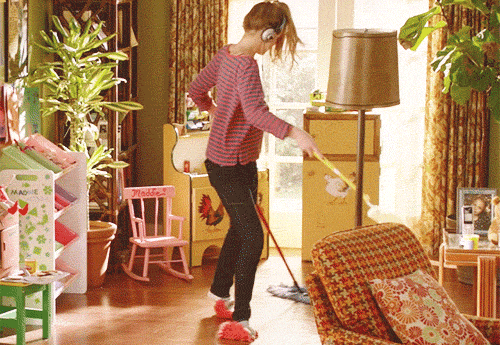How to Clean Your Email List: Boost Engagement and Deliverability
Let’s talk about one of the most overlooked pieces of your email marketing strategy: list maintenance.
A clean email list = better engagement, improved deliverability, and a more responsive audience. Neglect it? You’re looking at bounces, spam flags, and tanking metrics. Yikes. 😬
But first, let’s look at the positives! You’ve successfully built up your list of subscribers – congrats!

But, have you noticed your email list starting to look a little disorganized? Maybe conversions aren’t coming through as often as you’d like? It may be time for you to clean house.
What Does “Cleaning Your Email List” Actually Mean?
Email list cleaning scares many marketers because it involves (gasp!) potentially removing email addresses from that list – subscribers you’ve tried so hard to get in the first place. But, it is a necessary task on your marketing to-do list.
What does it mean to clean an email list?
It’s not glamorous, but cleaning your email list means removing invalid addresses, disengaged subscribers, and outdated data. In other words: only keeping the people who actually want to hear from you. For instance, you might scrub your email list of anyone who hasn’t engaged with one of your emails in 60 days.

It’s also a great opportunity to remove anyone who has actively unsubscribed from your list. Personally, I recommend you do this immediately. If you’ve procrastinated about doing it, this is your sign – it’s time to get rid of those emails!
If you want an engaged list, better yet — a profitable list, cleaning your email list is a must-do for a high-converting email list. Simple as that.
What Happens If You Skip This Step?
Ultimately, your goal is to send emails to your target audience. Several things can stop you from doing this. Most importantly, you risk irritating the very people to whom you’re trying to market. If someone doesn’t want to hear from you, why continue sending emails to them?
Think skipping list maintenance is no big deal? Think again. Here’s what could happen:
❌ Higher bounce rates = a hit to your sender reputation.
❌ More spam complaints = more emails going straight to junk folders.
❌ Lower engagement = wasted effort on emails no one’s even opening.
How Often to Clean Your Email List
If you’re wondering how often you should clean an email list, the answer is: It varies. Cleaning email lists vary from one company to another, and from one list to another.
However, a good rule of thumb is every 6 months – and definitely NOT longer than a year.
Or, if you want to keep your email list absolutely pristine and fresh year-round, trying cleaning it every 3 months.
If your bounce rates are creeping up or your click-through rates (CTR) are dropping, it’s time to prioritize.
One of the easiest ways to streamline this process is to embrace your email platform’s automation workflows. Platforms like ActiveCampaign can identify your unengaged subscribers automatically and make it as easy as 1-click to clean your list.
Red Flags That Your Email List Needs Some TLC
Aside from setting specific timeframes as to when you should clean your email list, you should also watch out for red flags that indicate it needs cleaning. Below are 3 warnings signs you need to watch out for.
🚩 Bounce rates climbing past 2%? Time for a scrub.
Email bounce rates average between 0.40% – 0.58% across all industries[1]. So, it’s really not unusual to get a few bounces. However, the problem is when you allow your bounce rate to exceed the email industry standard of 2%. Anything above this puts your sending reputation at risk. It also affects your email deliverability.
So, check your email marketing reports from the past 6 months – what does your bounce rate look like? Is it increasing? If it’s getting close to the 2% industry standard, it’s time to scrub your email list.
🚩 Spam complaints hitting 0.1% or higher? You’ve got work to do.
It’s crucial you pay attention to all your email marketing metrics, including spam complaints. Similar to open and click rates, they give ISPs recipient feedback on your content – and that feedback reflects in your email deliverability.
Are you getting spam complaints? ISPs notice that and the next time you send an email, they may send it to your subscribers’ junk folders. So, make sure to keep an eye on this important metric.
According to statistics, the average spam complaint rate is 0.1%[2]. So, if you notice your emails getting more than that, it’s time to clean your email list.
🚩 Click-through rates plummeting? That’s a sign your audience isn’t engaged.
The click-through rate (CTR) measures the percentage of subscribers who click on the call to action (CTA) in your email. While CTRs are almost always much lower than open rates (people often read emails without further engaging with them) a sudden, big drop is a serious red flag. Cleaning your email list could bring up your CTR and boost engagement.
Quick Tips to Maintain a Healthy List
Now that you know why it’s so important to regularly clean your email lists (+ warning signs to look out for), here are a few tips you can implement as part of your email list cleaning strategy.
Decide how often you’ll clean an email list
First and foremost, you need to decide how often you’ll clean an email list. Whether you decide to do it every 3 or 6 months, make sure to do it as often as necessary.
Not sure how often you should do it? Review your engagement metrics after each send. Eventually, you’ll get a better picture of how healthy your email list is overall. This, in turn, will give you an idea of how often you need to clean your list.
No matter how often you decide to clean your email list, it’s important you stick to it. However, make sure to revisit your cleaning frequency each year and determine whether you need to do it more or less often.
Say Goodbye to Inactive Subscribers: Try a re-engagement campaign, but don’t be afraid to let them go if they’re not interested anymore.
The thought of proactively removing subscribers from your email list (who haven’t unsubscribed) might sound crazy to you. But, it’s actually a good move – one that many marketers are now doing.
Removing inactive subscribers from your list can help improve ROI by ensuring that your list only contains engaged subscribers. After all, what’s the point of sending someone an email if they’re only going to delete it anyway?
With that said, don’t remove them right away – try to re-engage them first! Running a re-engagement campaign might help you regain your subscribers’ interest. For instance, you could offer a special bonus to recapture their attention. If that doesn’t work, simply ask them if they’d like to remain on your list and include an easy way for them to opt-out. If they remain inactive, only then should you remove them from your list.
Use Double Opt-In: Ensure only people who want your emails are subscribing.
There are numerous ways to confirm email addresses upon signup (i.e. single opt-in, pre-selected opt-in, double opt-in, etc.). Among the many options, I suggest providing a double opt-in method. Why? Because it’s the best way to make sure that your subscribers truly want your emails.
A double opt-in requires the subscriber to enter their email on your signup form, then to confirm once more (they’ll receive a confirmation email with a link they have to click to complete the registration).
A double opt-in may require more effort on the subscriber’s end, but it is worth it – for both the sender and recipient since it automatically helps remove bad email addresses from your list.
Get rid of bounced and invalid emails
After 2 tries, most systems automatically remove hard bounces. This is a good thing because you don’t want to keep sending emails to invalid email addresses. After all, doing so will only have a negative impact on your metrics, particularly your delivery rates.
However, in some cases, invalid emails can be harder to identify. For cases of suspected bounced emails, you can use email validation tools that can show you exactly which emails are likely to become hard bounces. You can monitor them and eventually remove them if necessary.
Ditch the Duplicates: Make sure every email in your database is unique and up-to-date.
Generally, an email address is the digital ID of a person. So, you should avoid having duplicate email addresses in your list because this means that you’re gathering information about the same person from two different sources.
Instead, you should strive to have a single customer view. All information about a subscriber should be linked to one email address. The first step to achieving this is by combining or removing duplicate email addresses.
Aside from helping keep your email list clean, you’ll also do your subscriber a favor since they won’t receive your emails twice anymore.
The bottom line about how to clean an email list
The success of an email marketing campaign shouldn’t be measured by the number of subscribers you have. Rather, it should be measured by the quality of the subscribers you do have and what actions they take as a result of your emails (i.e. downloading your eBook).
Remember, it’s always better to deploy campaigns to 500 engaged and active subscribers than it is to blast the email to 1,000 people if they don’t actually care about your email – or worse, report it as spam.
The power of email marketing is completely undeniable! It is one of the most reliable, consistent ways to grow your business and make sales consistently with your email list.
Let’s Get Your Email List Into Tip-Top Shape
A clean, engaged email list is the foundation of a successful email marketing strategy. Ready to optimize your list and ensure every subscriber is a potential buyer?
Let’s work together to make it happen. Book a free consultation today, and I’ll help you get your email list into tip-top shape so it’s primed to drive engagement, conversions, and revenue.
Click the link to schedule your free consultation now—your next-level email marketing strategy starts here!
Learn more about Gal’s services here.
Other posts related to how to clean an email list
keep your readers engaged and ready to hit the “buy now” button--no matter your list size.